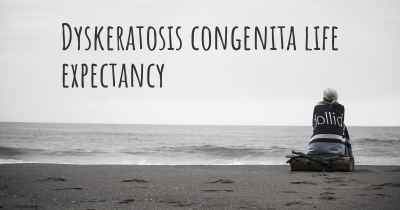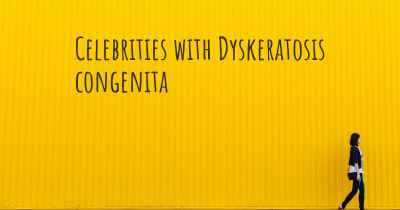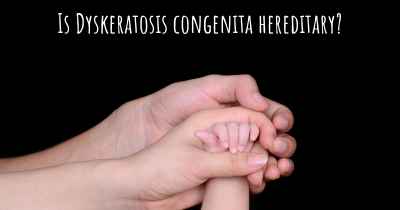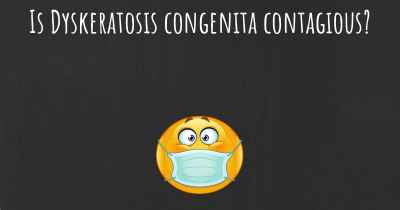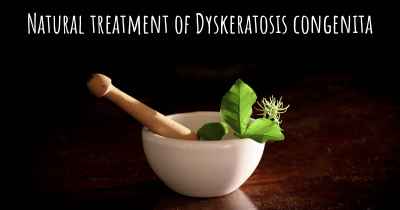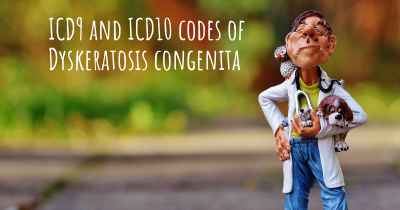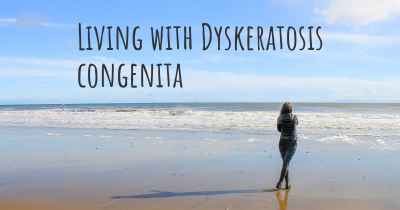Which are the causes of Dyskeratosis congenita?
See some of the causes of Dyskeratosis congenita according to people who have experience in Dyskeratosis congenita
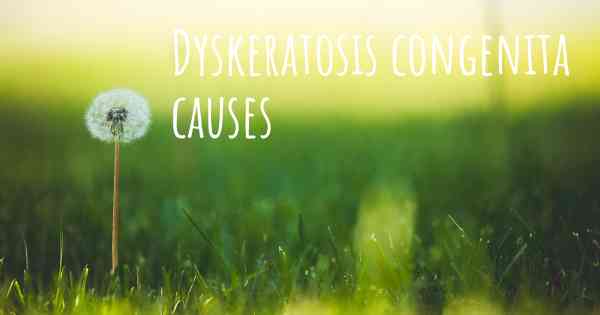
Dyskeratosis congenita (DC) is a rare genetic disorder that affects multiple systems in the body. It is characterized by a triad of clinical features including abnormal skin pigmentation, nail dystrophy, and oral leukoplakia. However, DC is a complex disorder with a wide range of symptoms and can affect various organs such as the bone marrow, lungs, liver, and gastrointestinal tract. The exact cause of DC is not fully understood, but it is primarily attributed to genetic mutations that affect the maintenance and stability of telomeres.
Telomeres and Telomerase
Telomeres are protective caps at the ends of chromosomes that prevent them from deteriorating or fusing with neighboring chromosomes. They consist of repetitive DNA sequences and associated proteins. Telomeres shorten with each cell division, acting as a cellular clock that limits the number of times a cell can divide. When telomeres become critically short, cells enter a state of senescence or undergo programmed cell death (apoptosis).
Telomerase is an enzyme that adds DNA sequences to the ends of telomeres, counteracting their shortening. It is particularly active in cells with high proliferative capacity, such as stem cells and germ cells. Mutations in genes involved in telomere maintenance and telomerase function can lead to dyskeratosis congenita.
Genetic Mutations
DC is primarily an inherited disorder, although some cases can occur sporadically without a family history. Several genes have been identified as being associated with DC, including:
- DKC1: Mutations in the DKC1 gene are the most common cause of DC. This gene provides instructions for making a protein called dyskerin, which is involved in the production and assembly of telomerase. Mutations in DKC1 lead to reduced telomerase activity and impaired telomere maintenance.
- TERT and TERC: These genes encode the components of telomerase, the enzyme responsible for adding DNA sequences to telomeres. Mutations in TERT or TERC can disrupt telomerase function, resulting in telomere shortening and DC.
- TINF2: Mutations in the TINF2 gene can cause DC. The TINF2 protein is involved in stabilizing telomeres and regulating telomerase activity. Mutations in TINF2 can lead to telomere dysfunction and DC.
- Other Genes: Mutations in other genes, such as NOP10, NHP2, WRAP53, RTEL1, and ACD, have also been associated with DC. These genes play various roles in telomere maintenance and telomerase function.
Inheritance Patterns
DC can be inherited in an autosomal dominant, autosomal recessive, or X-linked manner, depending on the gene involved. Autosomal dominant DC occurs when a person inherits one copy of the mutated gene from an affected parent. Autosomal recessive DC requires the inheritance of two copies of the mutated gene, one from each parent. X-linked DC is caused by mutations in the DKC1 gene located on the X chromosome and primarily affects males.
Other Factors
While genetic mutations are the primary cause of DC, other factors may influence the severity and progression of the disease. For example, environmental factors, such as exposure to certain chemicals or toxins, may exacerbate the symptoms of DC. Additionally, genetic modifiers and epigenetic factors can influence the clinical manifestations of the disease, leading to variability in symptoms among affected individuals.
Conclusion
In summary, dyskeratosis congenita is a rare genetic disorder primarily caused by mutations in genes involved in telomere maintenance and telomerase function. These mutations lead to telomere dysfunction, resulting in a wide range of symptoms affecting multiple organs. While the exact mechanisms underlying DC are still being studied, understanding the genetic basis of the disease is crucial for accurate diagnosis, genetic counseling, and potential future therapeutic interventions.
